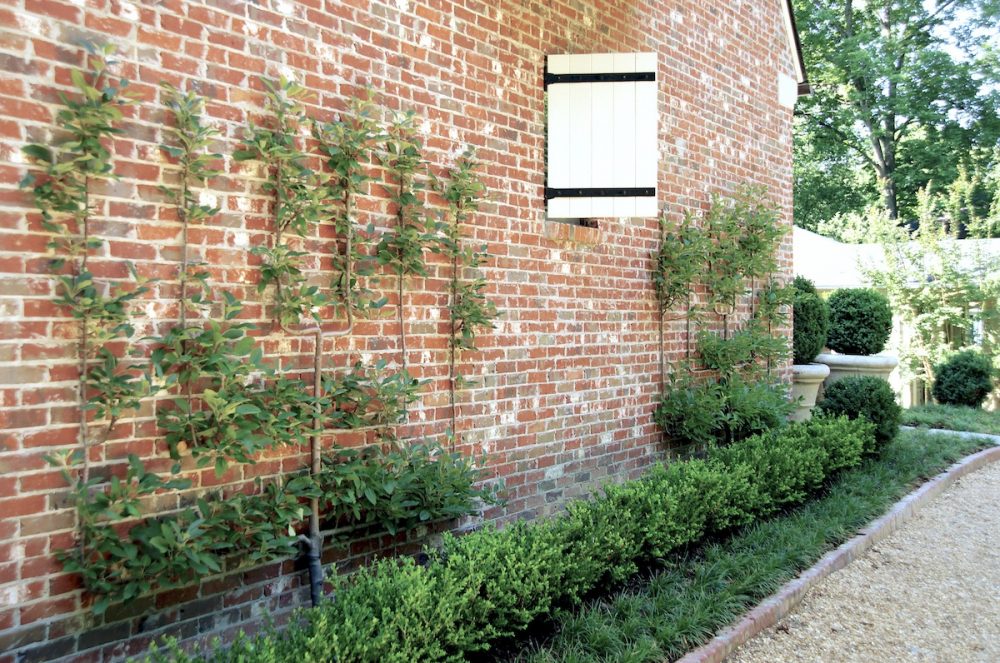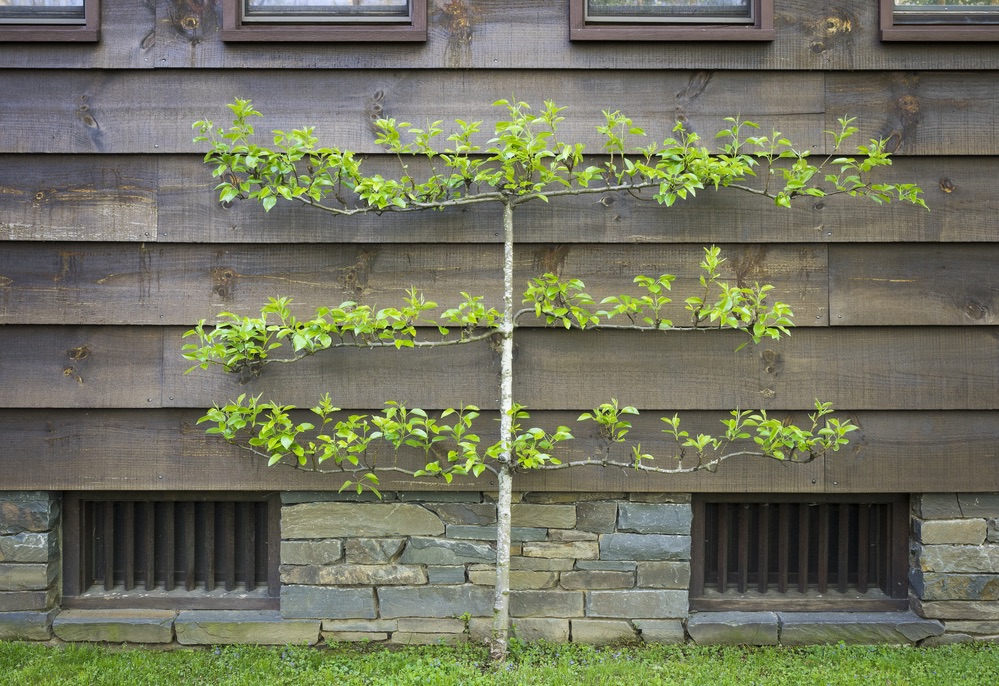
Espalier is the art of training a plant to grow on an upright surface, such as a wire or trellis or a wall. We know that this practice dates all the way back to the days of the Pharaohs and their grand gardens. In the medieval period, a group of European monks began the practice again to feed themselves at an abbey with very little space for gardening. They trained fruit trees along courtyard walls which multiplied their harvest. That is the beauty of using the technique of espaliering.
Whether you have an apartment balcony with only containers, a suburban shoebox, or a farm with acreage, this type of gardening will bring pleasure to your eye as well as your taste buds.
We all know that eating fruit is good for us, and there is nothing better than the fresh, juicy fruit grown right outside your back door. So often, commercially grown fruit is grown from cultivated varieties that are good for harvesting before the fruit ripens or for good color. And, in many cases, they may require pesticides. But, for the gardener, there are so many great cultivars and varieties that are tasty and pest-resistant. You can literally enjoy the fruits of your labor and help save the earth by saving space at the same time.
Both shrubby fruit and tree fruit can be espaliered. Blueberries, blackberries, raspberries, and grapes are easily trained to a wire or trellis. Likewise, apples, pears, figs, peaches, plums, cherries, and citrus trees are wonderful in containers or along a wall or fence. Once harvested, the fruits can be enjoyed on display or incorporated into an arrangement, in addition to the more traditional uses.

The art of espaliering may seem time-consuming, but there are a few forms that any of us can achieve quickly. The easiest espalier to create is the single-tier horizontal cordon. It can be a wonderful addition to a flower, vegetable, or rose garden.
How to Espalier Apple Trees
This method is for a single-tier horizontal-cordon Gala apple.
- Find a bud on a 1-year-old tree that is approximately 18 inches above planted soil level.
- With pruning shears, make a 45-degree cut just above your desired bud.
- Set two, 4-inch-square, 18-inch-tall cedar fence posts in the ground, spaced 7 feet apart.
- Screw eye bolts into each post 2 inches below desired tree bud (approximately 16 inches above ground).
- Tie 14-gauge copper wire to eye bolts while making sure wire is taut.
- Plant the tree centered between two posts.
- Once growth emerges from bud, select the two best shoots that will align with your copper wire, and remove the rest.
- After shoots get about 12 inches long, tie them to copper wire with stretchy gardener’s tape.
- Continue training to copper wire as shoots grow. The tree should reach the 7-foot spread in three years.
- Flowering and fruiting will begin once the tree is 2 or 3 years old.
Selecting Espalier Fruit Trees
- Make sure you purchase a male and female if your particular variety isn’t self-pollinating.
- Some fruit trees need a minimum of 45 days of temperatures below 45°F. Compare the hardiness zone of where you live to the requirements of the fruiting tree you would like to plant.
- Purchase plants locally to ensure that they are grown on rootstock that works best in your region.
- Fruiting plants always need at least eight hours a day of full, direct sunlight to flower and fruit.
- Look for antique varieties or new cultivars that are insect and disease resistant.
By Troy Rhone
